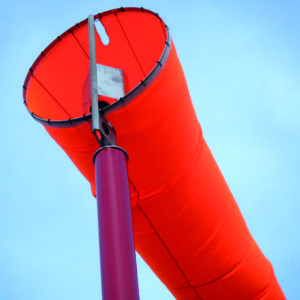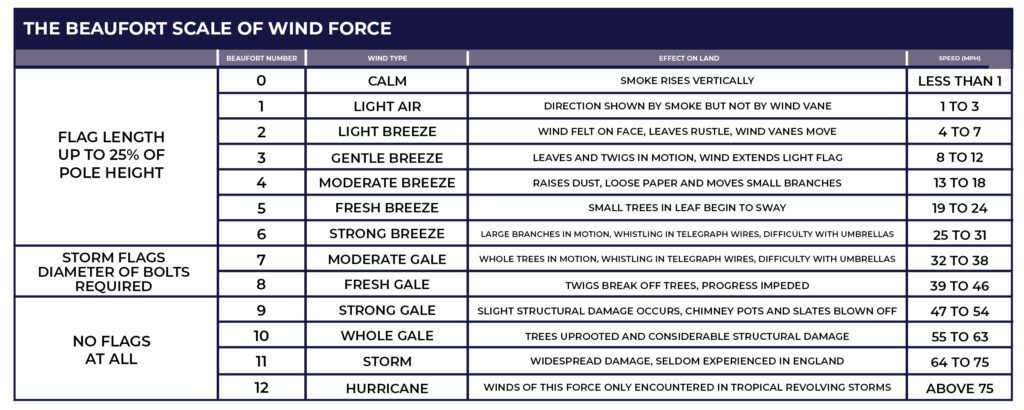

X
This site uses cookies. By continuing to use this site you agree to our use of cookies. To find out more, see our Privacy Policy and Cookie Policy.

 What is the Beaufort Scale?
What is the Beaufort Scale?The Beaufort Scale is a system for estimating wind speeds based on observed sea conditions. It was developed in the early 19th century by Admiral Sir Francis Beaufort, a Royal Navy officer. It has since been adapted for use on land as well.
The scale ranges from 0 to 12, with each number corresponding to a specific range of wind speeds and the associated sea or land conditions.
Flags, with their dynamic movement in the wind, serve as visual cues for the intensity of the breeze. They react differently at each Beaufort level. The hang down limply in calm conditions and are torn to shreds in hurricane-force winds. Understanding these visual signals becomes crucial for mariners, aviators, and outdoor enthusiasts alike.
Whether you’re a sailor, pilot, or someone who enjoys spending time outdoors, knowing how the Beaufort Scale affects flags can be invaluable. There are many practical implications of the scale. These include its impact on decision-making for maritime activities, aviation, and general safety considerations.
Here’s a guide to understanding how the Beaufort Scale affects your flag:

The flag hangs down and appears limp. There is minimal movement in the air. Your flag is likely to be still, reflecting the absence of significant wind. This is an ideal condition for displaying a flag with minimal fluttering.
The flag may extend but remains limp. There is noticeable movement in the air. A light breeze introduces gentle movement to your flag. It may slightly extend, but the overall appearance is still relatively calm.
The flag becomes well-extended, raising at points. Leaves and small twigs are in constant motion. Your flag fully extends, responding to the increased wind speed. It starts to show more dynamic movement.
The flag continues to fly and extends further. Large branches are in motion, and you may hear whistling in overhead wires. Your flag becomes more taut, with increased flapping.
The flag is flying and flag cloth is lifted, but with no extended surface. Twigs may break off trees. Your flag experiences increased stress. It may appear more strained as the wind intensifies.
The flag is torn, with damage to the fly. Considerable structural damage may occur. Your flag may suffer damage, especially at the edges. This is a clear sign of severe wind conditions.
This is an extreme condition with potentially dangerous winds. The flag is torn apart or completely shredded. Widespread damage occurs.
Understanding the Beaufort Scale helps in selecting the appropriate size and type of flag for the current wind conditions. It’s important to choose a flag that can be seen and identified clearly but is not overly stressed by the wind to avoid damage. The Beaufort Scale definitely has an impact on flags that goes beyond mere aesthetics.